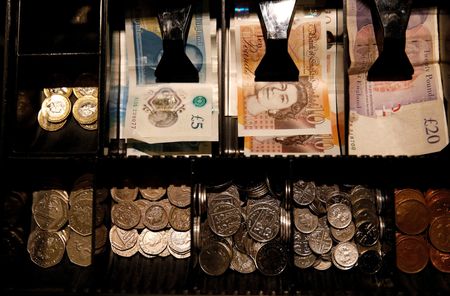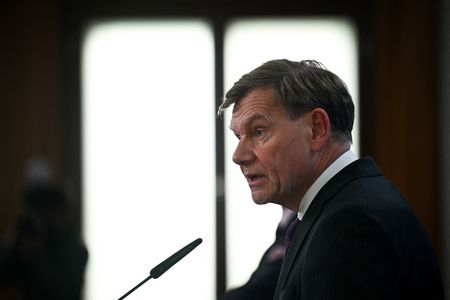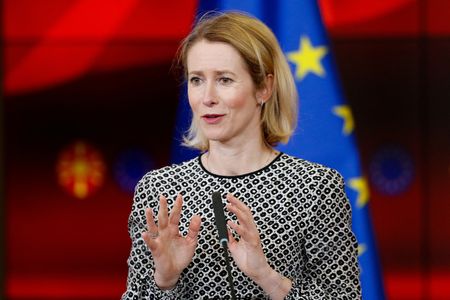By Amanda Cooper
LONDON (Reuters) -The pound traded at its highest in over three years on Friday, heading for its largest weekly gain against the dollar since early April, thanks in part to unexpectedly robust UK retail sales data and to ongoing investor unease around U.S. assets.
Sunny weather boosted British consumer spending in April. Retail sales volumes jumped by 1.2% month-on-month, the Office for National Statistics said on Friday after a downwardly revised 0.1% increase in March. Economists had forecast a rise of 0.2%.
Sterling has gained 1.5% this week and on Friday hit a high of $1.3468, the most since February 24, 2022, when Russia invaded Ukraine, sparking a global flood of money into safe-havens like the dollar.
Just over three years later and the investor nervousness about the outlook for the global economy that would normally have funnelled cash into the dollar is sucking capital out of U.S. markets, which are now the epicentre of the uncertainty.
U.S. President Donald Trump’s erratic application of hefty tariffs on trading partners – even with the pauses and outlines of deals that have ensued – have generated the most uncertainty among investors in years.
To boot, Trump’s sweeping tax and spending bill that will strain U.S. government finances even further by adding trillions of dollars in debt, has made investors wary of long-dated government bonds, even those outside elsewhere, such as UK gilts.
Higher gilt yields have made sterling more attractive to non-UK investors, but the concerns around public finances mean Britain has the highest government borrowing rates in the developed world, with 30-year gilt yields topping 5.5% on Friday, despite news that energy bills were set to drop.
“This is a sign that the market remains wary of lending to the UK while the government still does not have control of public spending, even if the decline in the energy price cap is adding downward pressure on short term yields this morning,” Kathleen Brooks, XTB research director, said.
“The bond market has dictated UK fiscal policy before, and it could do so again now that bond markets remain volatile.”
Further underpinning sterling this week was Britain agreeing the most significant reset of ties with the European Union since Brexit on Monday, removing some trade barriers and collaborating on defence but also touching on sensitive issues including fishing rights.
Data on Wednesday that showed UK consumer inflation picked up faster than expected in April, thereby reducing the Bank of England’s ability to quickly cut rates to protect growth.
The futures market shows traders see UK rates falling by around 38 basis points by the end of this year, which would imply one quarter-point cut and a roughly 50/50 chance of a second, compared with 50-bp drops in both U.S. and euro zone interest rates in that time.
(Reporting by Amanda Cooper; Editing by Toby Chopra)











